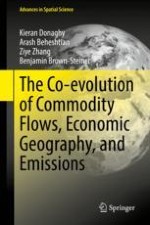This book presents extensions to current commodity-flow models to analyze the economic and environmental impacts of recent structural changes, such as fragmentation of production and lengthening supply chains. The extensions enable augmented commodity-flow models to analyze the vulnerability of supply chains and regions to climate change and extreme weather events. The models allow the explicit treatment of trade in intermediate goods; the so-called “new economic geography” behavioral foundations for production and inter-industry and interregional trade; endogenous determination of capital investment and employment; and changes in emissions associated with production, consumption and freight movement. Presenting a modeling framework and simulations that are based on a thirty-year, spatial time-series of inter-industry and interstate trade in the US, this unique book is a valuable resource for regional scientists, economic geographers and transportation modelers, as well as environmental and atmospheric scientists.
